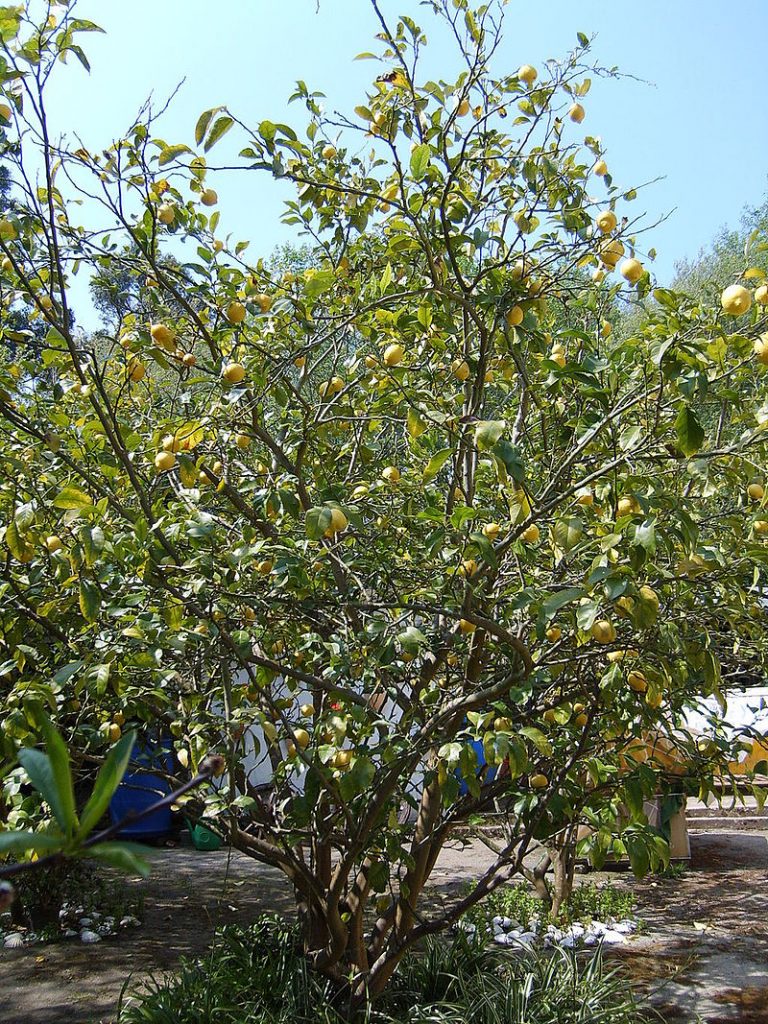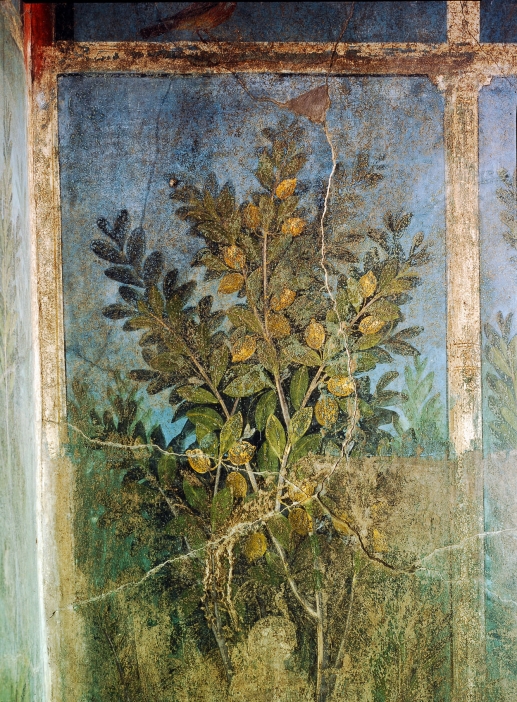
The lemon is a small evergreen tree in the rue family, Rutaceae, that also includes curry tree, kumquat, and Skimmia. Native to Northeast India and Northern Myanmar, lemons probably are the result of a hybrid cross between citrons and sour oranges, and have been cultivated for about 4000 years. According to most scholars, they were spread to the Mediterranean area by the Arabs about 200 AD. The ancient Roman naturalist, Pliny the Elder (d. 79 AD) writes about a citrus but its identity is uncertain and it is unlikely to be the lemon. A wall painting in the House of the Orchard, however, includes a tree in fruit that has been identified as Citrus limon, introducing uncertainty about the 200 AD date of introduction into the Mediterranean area.

Description: The plant grows 10-20′ tall and has thorny twigs and oval leaves that are reddish when young but turn dark green above, light green below, with maturity. Red tinted buds appear singly or in small clusters in the axils of the leaves and open to mildly fragrant flowers with 4-5 petals that are white above and reddish purple below. The oval fruit has a low nipple at one end, acidic pulp, small pointed seeds and an outer rind that is yellow when ripe and dotted with oil glands.
Size: 10-20′ H
Light: Full sun
Soil: Fertile, moderately moist, well-drained
USDA Hardiness Zones: 9-11
Photo Credit Xosema Wikimedia Commons